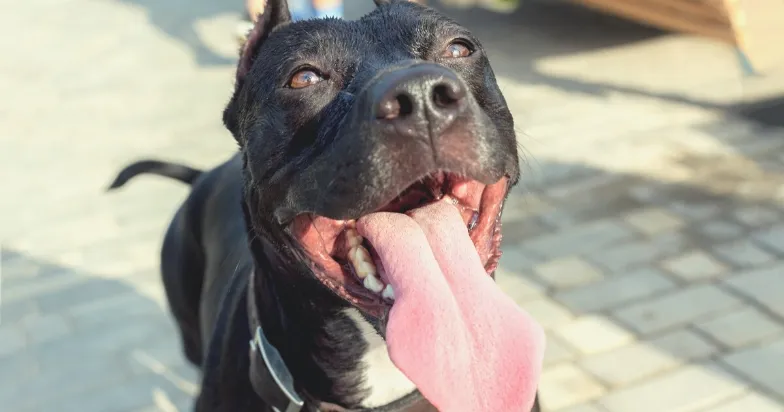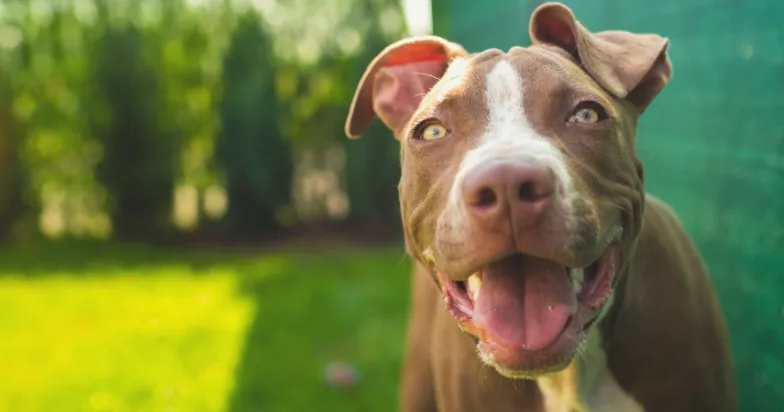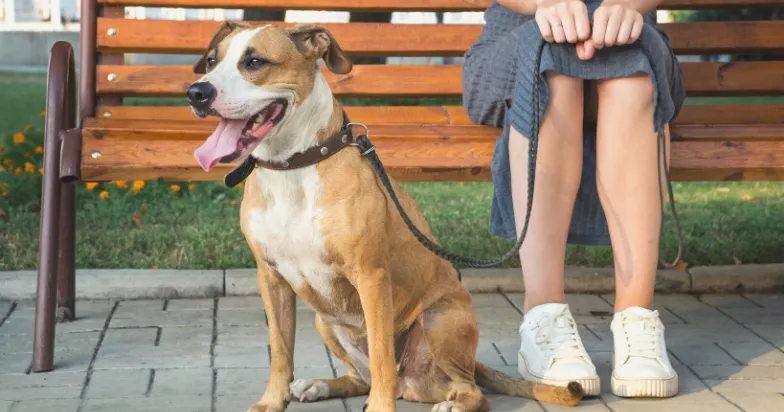Are you constantly battling your Pitbull on walks, feeling like you’re being dragged rather than enjoying a peaceful stroll? Many dog owners face the frustration of a dog that pulls excessively on the leash, turning what should be an enjoyable experience into a challenging workout. Understanding why your Pitbull is pulling on the leash and implementing effective training strategies can transform your walks and strengthen your bond with your canine companion.
This guide will delve into the common reasons behind this behavior and provide practical, step-by-step methods to teach your Pitbull how to walk politely on a leash, ensuring a more harmonious experience for both of you.
Why Does Your Pitbull Pull on the Leash?
The first step to addressing leash pulling is to understand its root causes. Dogs pull on leashes for a variety of reasons, and identifying the specific triggers for your Pitbull can help you tailor your training approach.
1. Reinforcement Through Success
One of the most common reasons dogs pull on the leash is simple: they’ve learned that pulling gets them what they want. From your dog’s perspective, if they pull hard enough towards an interesting smell, another dog, or a specific spot, they eventually reach it. This success reinforces the pulling behavior. For example, if your Pitbull pulls intensely towards a patch of grass they want to sniff, and you eventually allow them to reach it, they’ve learned that pulling is an effective strategy to achieve their goal.
2. On-Leash Greetings
Consistently allowing your Pitbull to greet other dogs or people while on leash can inadvertently teach them to pull. If on-leash greetings become a regular habit, your dog will anticipate and pull towards every potential interaction, believing that’s how they get to say hello. This creates an expectation that can be difficult to manage, as they associate the sight of other dogs with the act of pulling to greet.
3. Fearfulness and Anxiety
Dogs can also pull on the leash due to fear or anxiety. Animals exhibit a “fight or flight” response when feeling threatened. For some dogs, fear manifests as a “fight” response, leading to lunging, barking, or growling on the leash in an attempt to create distance from whatever makes them fearful. Other dogs may exhibit a “flight” response, pulling erratically in various directions to escape an uncomfortable situation. Understanding these subtle cues is essential for addressing the underlying emotional state.
4. Natural Walking Pace
Pitbulls, like many dog breeds, naturally walk at a faster pace than humans. Their trot is often quicker than our comfortable walking speed, meaning they may pull simply because they’re trying to move at their natural rhythm while you’re moving slower. It’s important to remember that their instinct is to cover ground efficiently, which often means moving ahead of their human companion.
5. Lack of Leash Training
Perhaps the most straightforward reason a Pitbull pulls on the leash is that they’ve simply never been taught how to walk politely without pulling. Dogs are not born with an innate understanding of loose-leash walking. It’s a learned skill that requires consistent training from their owner. If you haven’t dedicated time to teaching this skill, it’s unfair to expect your dog to know it intuitively. If you’re also wondering about other puppy training basics, you might find tips on how to train a puppy to be alone helpful.
 A powerful Pitbull dog with a harness, pulling on its leash during a walk
A powerful Pitbull dog with a harness, pulling on its leash during a walk
How to Begin Teaching Your Pitbull to Stop Pulling on Leash
Teaching your Pitbull to stop pulling on the leash requires patience, consistency, and the right techniques. Here are three effective methods you can use to achieve better leash manners.
1. Luring with Rewards
Luring is an excellent method for highly food-motivated dogs. This technique involves using high-value treats or your dog’s regular food to guide them into the desired “heel” position.
- Execution: Hold a treat near your dog’s nose. As they walk by your side in the heel position (where your dog’s paws are at or behind your heel, never in front), reward them with the treat. If your dog starts to pull ahead, use the treat to redirect their attention back to your side, luring them into the correct position. Only give them access to the reward when they are walking calmly in the heel position.
- Key Tip: Ensure your dog is genuinely motivated by food. If they’re not, try different high-value treats like cooked chicken or hot dogs. Consistency is crucial; practice this in various environments, starting with quiet areas and gradually moving to more distracting locations. When considering other early training stages, knowing when to start potty training a puppy outside can also be beneficial for establishing good habits.
2. Teaching Leash Pressure
This method focuses on teaching your dog to yield to pressure from the leash, making the act of pulling uncomfortable but not painful. It typically involves using a training collar like a slip lead or a prong collar, which provides a gentle, yet firm, reminder when your dog pulls.
- Execution: Apply consistent, gentle tension to the leash, either to the left or right side of your dog’s neck. The moment your dog takes a step in the direction you applied tension (towards you and the leash), immediately release all tension, creating slack in the leash. This teaches your dog that moving towards the leash (and thus, towards you) is the way to relieve the discomfort. The goal is to make the leash a communication tool, not a constant source of restraint.
- Important Considerations: Always introduce training collars responsibly and under the guidance of a professional if you’re unsure. The aim is clear communication, not punishment. The discomfort should be momentary and release instantly when your dog responds correctly.
 A person is teaching a Pitbull to walk politely on a leash with a training collar in an outdoor setting
A person is teaching a Pitbull to walk politely on a leash with a training collar in an outdoor setting
3. Combination of Luring and Leash Pressure
For many dogs, combining both luring and teaching leash pressure offers the most effective and quickest results. This approach leverages both positive reinforcement (rewards for good behavior) and clear communication about what not to do (releasing pressure when they comply).
- Execution: Start by using treats to lure your Pitbull into the heel position. As they maintain this position, reward them generously. If they start to pull, gently apply leash pressure. The moment they turn their attention back to you or take a step in the correct direction, release the pressure and immediately reward with a treat. This teaches your dog to take direction from you and the leash, while simultaneously being rewarded for staying in the desired position. This method builds a strong foundation for reliable loose-leash walking, making your walks more enjoyable and stress-free.
Key Considerations for Successful Leash Training
Beyond specific techniques, several important principles will contribute to your Pitbull’s success in learning to walk politely on a leash.
- Prevent Reinforcement for Pulling: Never allow your dog to get what it’s pulling towards. If your Pitbull is pulling towards a specific sniff spot, stop moving. Only resume walking when there is slack in the leash. This teaches them that pulling prevents them from reaching their goal, while loose-leash walking allows them to proceed. This also applies when teaching them about boundaries, similar to how you might approach when to let puppy out of crate at home.
- Eliminate On-Leash Greetings: To break the habit of pulling towards other dogs or people, temporarily stop all on-leash greetings. Teach your Pitbull that walks are for walking with you, not for greeting every dog they see. You can practice “look at me” commands when other dogs pass, rewarding your Pitbull for focusing on you instead of the distraction. This creates a clearer understanding of appropriate behavior during walks.
- Be Consistent: Consistency is paramount in dog training. If you are inconsistent – sometimes allowing pulling, sometimes correcting it – your Pitbull will become confused and will likely test boundaries to see what they can get away with. For consistent loose-leash walking, you must be consistently applying the training rules. Every walk is a training opportunity. When addressing other behavioral issues, remember consistency, such as when learning how to stop puppy barking at night.
- Patience and Repetition: Leash training takes time and many repetitions. Don’t get discouraged if progress isn’t immediate. Celebrate small successes and understand that your Pitbull is learning a new skill. The more consistently you practice, the faster they will learn.
 A close-up shot of a Pitbull wearing a leash and collar, looking attentively at its owner
A close-up shot of a Pitbull wearing a leash and collar, looking attentively at its owner
Conclusion
A Pitbull pulling on the leash can indeed be taught to walk politely by your side. With consistent training, clear communication, and plenty of positive reinforcement, your dog will learn that loose-leash walking is the most rewarding way to experience their daily strolls. Remember that what you reward and allow will continue, so actively reward your Pitbull for good leash manners and prevent them from leading you on the walk. By understanding the reasons behind their pulling and applying these effective training methods, you can transform your walks into enjoyable, stress-free experiences for both you and your beloved Pitbull. Establishing strong foundational training like this is just as vital as finding the easiest way to house train a puppy to ensure a well-behaved companion.
